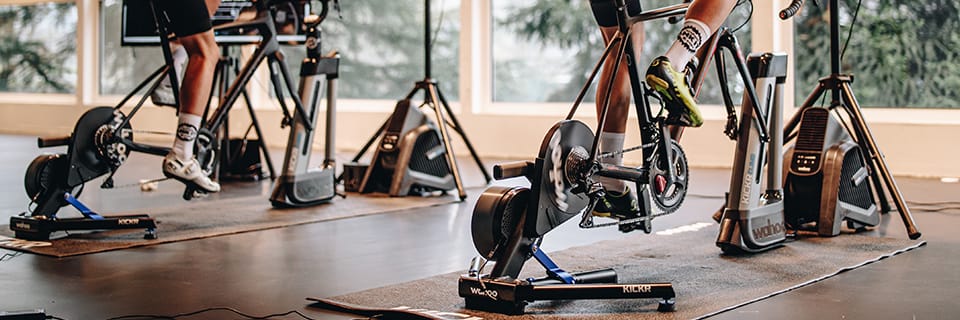Every cloud has a silver lining. This winter period represents a good opportunity to carry out specific work - often more difficult to do outdoors due to traffic or the topography of the terrain - to improve the quality of your pedaling and increase your performance, whether in terms of power, velocity, explosiveness or foncier.
As well as helping you to stay in good physical condition, this technical and athletic workout will enable you to hit the ground running when we're once again allowed out on our roads and trails.
Getting ready...
As a preamble, please bear in mind that cycling on home trainer causes sweating and an increase in heart rate due to the rise in body temperature, since there is no air circulation. That's why it's so important to stay hydrated on a regular basis.preferably with isotonic drinks or at least electrolyte tablets, to avoid dehydration and injury, particularly to ligaments.
If possible, place yourself near a window, or install a fan in front of you if you have one. Don't forget to place a mat or towel on the ground to protect it, and on the bike, as perspiration is acidic and can attack certain bike components (cockpit, front brake, etc.). Keep a towel nearby, for example on the handlebars, to wipe your face regularly, as you'll soon be dripping with sweat.
...and Precautions
Once these preparations are complete, always start with a gentle, gradual warm-up lasting 10 to 15 minutes. Likewise, it's important to return to calm at the end of the session with 5 to 10 minutes of smooth, low-resistance pedaling.. As a general rule, avoid sessions lasting more than an hour, as the home trainer puts much greater strain on joints and muscles. In fact, you're always on the move, so you're always exerting yourself because, with the exception of a few rare models, there's no inertia, no descent...
After this short but essential warm-up, you can attack your exercise, depending on the point you wish to improve. With a resistance home trainer, i.e. one attached to the rear wheel, you can perform all the exercises presented below. While roller home trainers are ideal for working on pedaling technique, balance, velocity and power, they are limited when it comes to power.
In any case, take care not to overdo it during this pandemic period, to avoid weakening your immune system.. While regular physical activity strengthens your immune defences, too heavy a training load can weaken them and encourage the development of symptoms in previously asymptomatic carriers.
Exercise
To help you through this special time, Probikeshop offers a range of exercises that can be performed with any home trainer, whatever its level of performance. If your home trainer is connected and/or interactive, online platforms such as Zwift will make your workout fun. For those with a more basic home trainer, include a good musical playlist, a series or a film to avoid boredom and keep you motivated!
What's more, the French Cycling Federation has drawn up a training plan with three programs to suit your level: "Mise en forme" / "Intermédiaire" / "Expert. These programs include home trainer sessions and physical preparation work.
Velocity
This is the ability to turn the legs quickly. This is measured by the number of rotations per minute (rpm). Working on coordination and velocity increases pedaling efficiency and reduces muscle fatigue.
The velocity is worked out by grinding at low intensity (65-70% of MAP), ideally at 110-120 rpm over a period of at least 30 minutes.
You can also perform shorter but more intense exercises, alternating sets of 5 minutes hyper-velocity / 2 minutes recovery, for example.
Explosiveness
This will improve your sprinting ability and guarantee lightning-fast acceleration.
You can work on this quality by very short efforts (5 to 20 seconds) but very violent (intensity "i7"; give it all you've got), with a recovery time of 2 to 5 minutes. For this type of session, it's essential to include a long warm-up to avoid the risk of muscle strains or tears.
Pedaling
In addition to velocity, work on pedaling techniquethat is, round pedaling. Naturally, cyclists tend only to push on the pedals. Round pedaling means actively pulling up on the return stroke, with the ankles moving as smoothly as possible.
The most effective way to improve this is to repeat short phases: 4 to 5 times 30 seconds of single-leg pedaling, alternating left leg/right leg, with a 2-minute recovery period between each series. Pedaling should be done with velocity.
This workout will enable you to make major gains in performance.
Foncier
The home trainer will enable you to work on your groundwork. Done properly, a 30-minute session produces the same effect as a 2h-2h30-hour road outing.. Endurance is worked out by pedaling at between 70 and 90% of your maximum heart rate, in 3-minute intervals at "i3" intensity, with a 3-minute recovery period.
Strength and power
By performing this exercise with a high gear and a low cadence (50 to 70 rpm), you'll develop your strengthideal for increasing your power. Power is the combination of strength and velocity.
You can, of course, work on strength by pedalling both legs at the same cadence of 50-70 rpm with "i4" intensity (anaerobic threshold), over longer periods (around 5 minutes of effort / 5 minutes of recovery), but without exceeding 25 minutes in total so as not to risk injury once again.
Pedaling should be at an "i3" intensity level, i.e. slightly above your basic endurance pace. In concrete terms, this is a pace that you can maintain for 2 hours on the road, but still find it hard to talk; the point here is not to put yourself in the red.
Découvrez tous nos conseils & Tutoriels
ROAD - Turbo Trainers and Rollers
-
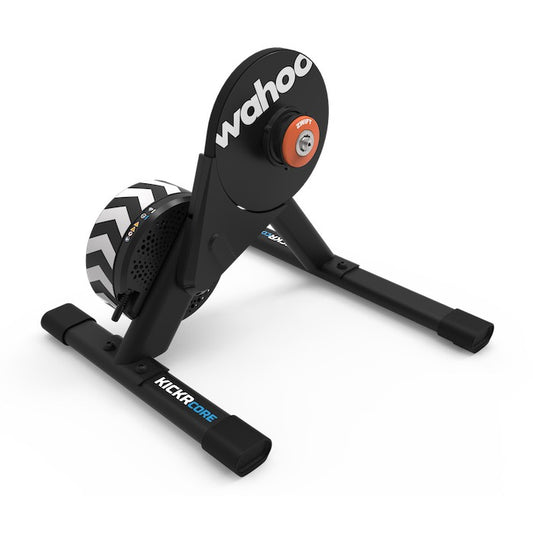
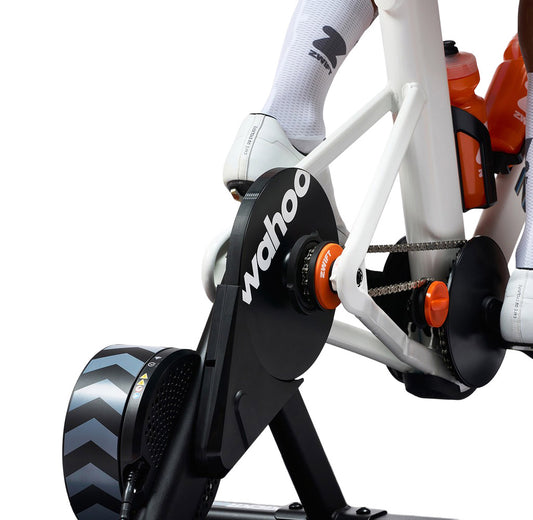
Home Trainer WAHOO KICKR CORE V2 ZWIFT ONE Version COG&CLICK
Regular price 549,90 €Regular priceUnit price per -
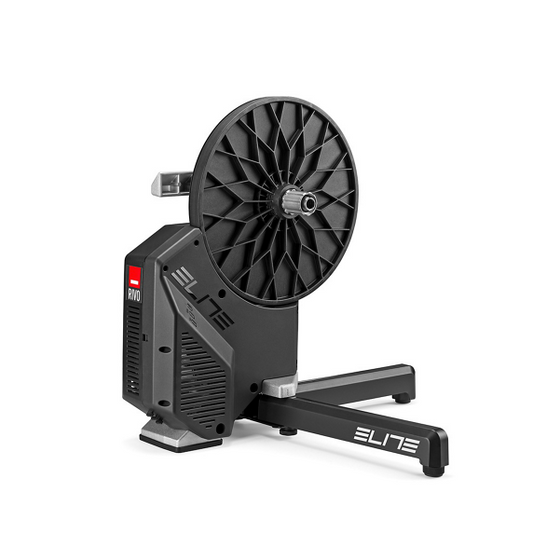

Home Trainer ELITE RIVO
Regular price 449,90 €Regular priceUnit price per -
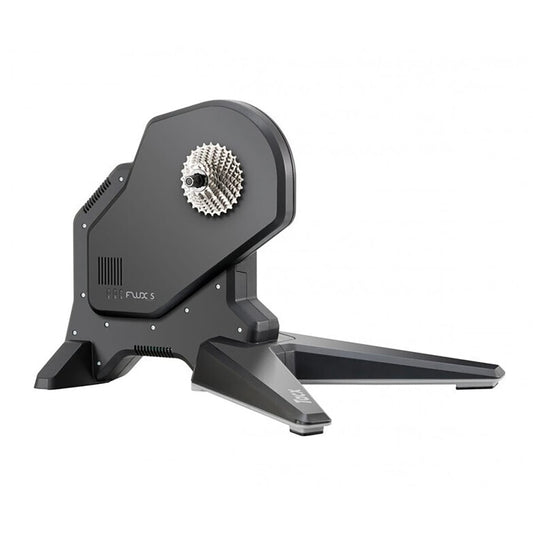
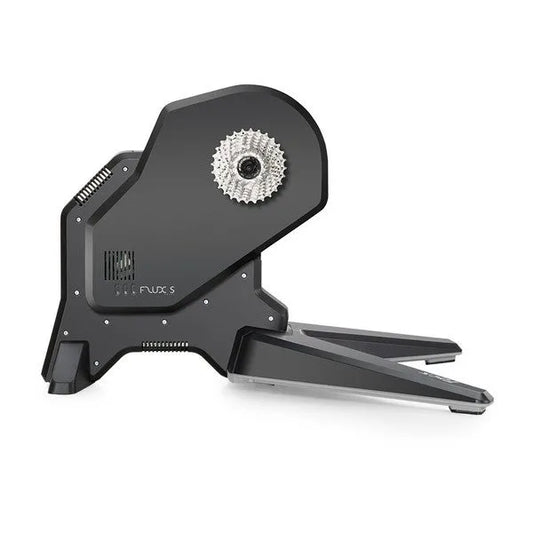
Home Trainer TACX FLUX S SMART T2900S
Regular price 499,90 €Regular priceUnit price per -
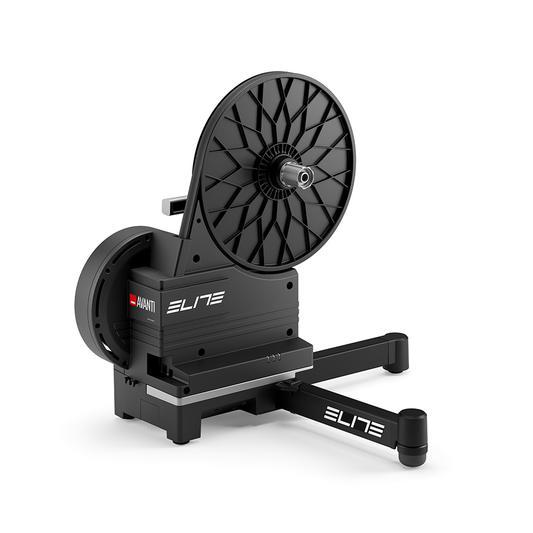
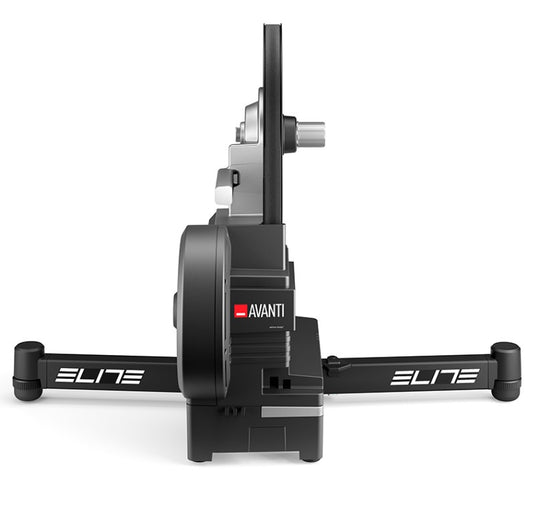
Home Trainer ELITE AVANTI
Regular price 529,90 €Regular priceUnit price per -
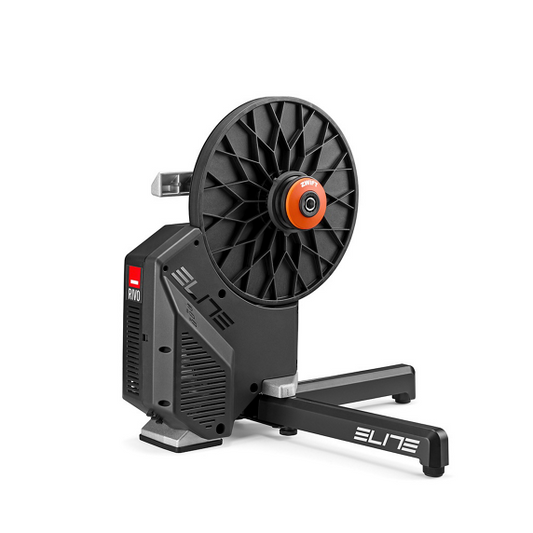
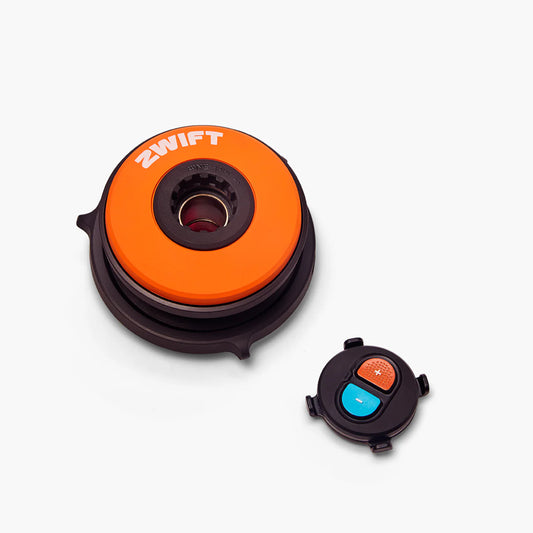
Home Trainer ELITE RIVO Version COG&CLICK
Regular price 449,90 €Regular priceUnit price per -

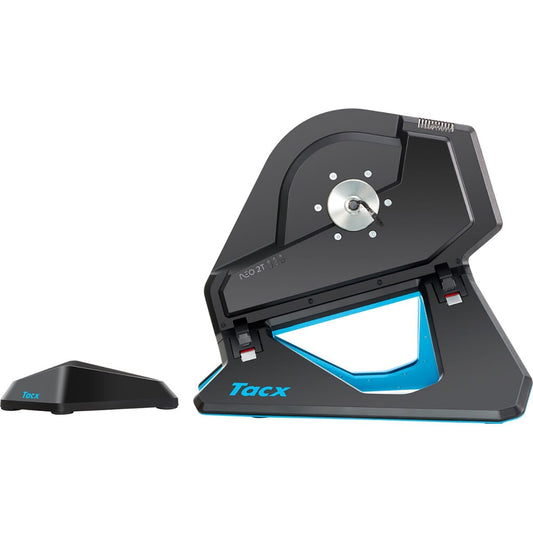
Home Trainer TACX NEO 2T SMART T2875
Regular price 899,90 €Regular priceUnit price per -
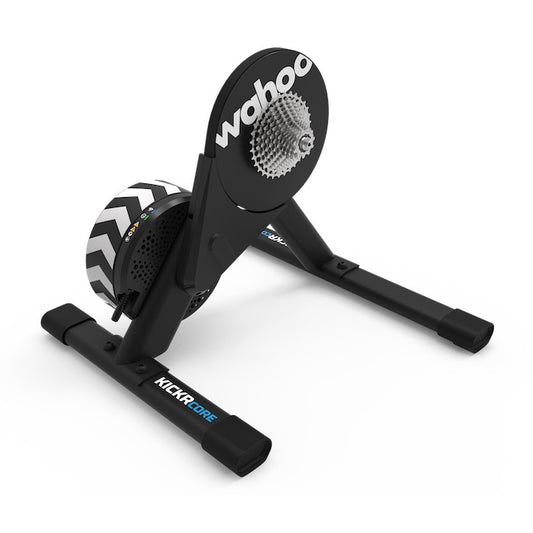
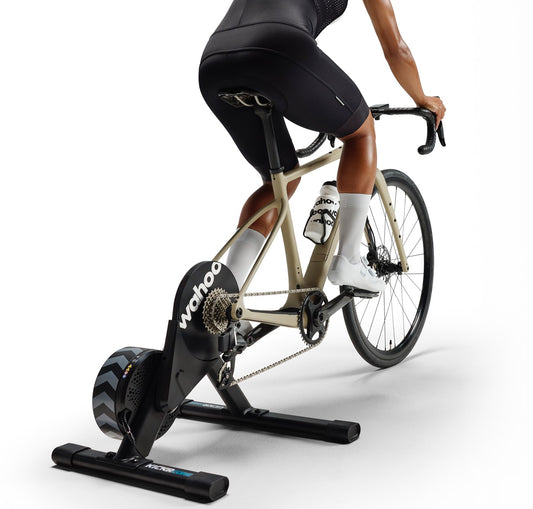
Home trainer WAHOO KICKR CORE V2
Regular price 499,99 €Regular priceUnit price per -
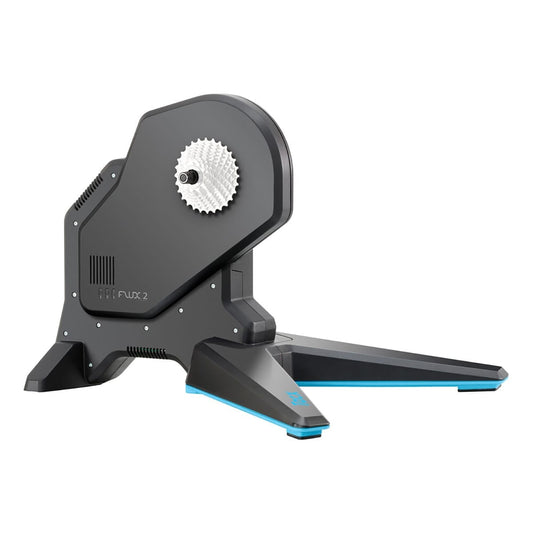
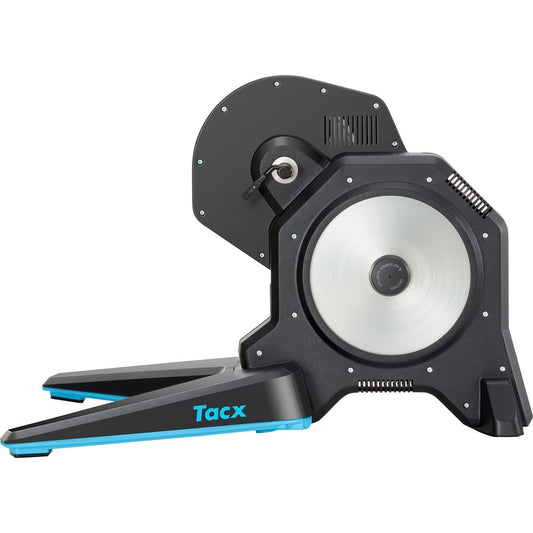
Home Trainer TACX FLUX 2 SMART T2980
Regular price 579,90 €Regular priceUnit price per
